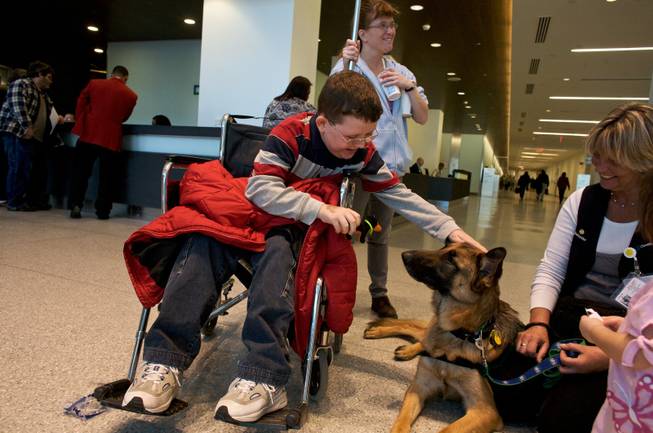
An emphasis on patient experience: Cleveland Clinic patient Robbie Hansen, 9, pets Texas, a therapy dog, in the clinic’s lobby. Several good-natured dogs and their handlers roam the hospital, bringing cheer to patients and their families.
Tuesday, Feb. 17, 2009 | 2 a.m.
Lou Ruvo Brain Institute
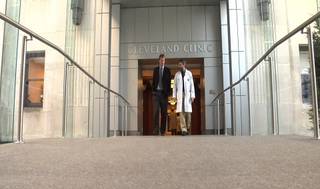
Viewing video requires the latest version of Adobe's Flash Player
Lou Ruvo Brain Institute
Sun Archives
- Aiming to revolutionize dementia research (1-7-2009)
- Brain institute thinking big (12-24-3008)
- Six-figure donation to be used to fight brain diseased (1-28-2008)
- Where I Stand — Guest columnist Larry Ruvo: Defeating Alzheimer’s (8-26-2005)
- Renowned architect will design Alzheimer’s center (3-2-2008)
The Cleveland Clinic main campus is a city unto itself, remarkable for its magnitude, beauty and attention to detail in caring for patients.
Inside the newest building’s spacious atrium, visitors are greeted by classical music, paintings, sculptures, a reception staff in red jackets — and sweet dogs that wander the hospital with their handlers, bringing cheer to patients.
Officials designed the aesthetics and amenities to soothe patients otherwise terrified by hospitals.
Cleveland Clinic’s patient-centered philosophy is coming to Las Vegas — where some health providers have been known more for pursuing profits than patient satisfaction. In Las Vegas the Cleveland Clinic will run the clinical and research operations of the Lou Ruvo Brain Institute. The merged organization will be called the Cleveland Clinic Lou Ruvo Center for Brain Health.
The brain institute team in Las Vegas shares the Cleveland Clinic’s belief that clinical care and research should be conducted with patients and their caregivers as the top priority. Larry Ruvo, a businessman and philanthropist, founded the institute out of frustration with the level of care received by his father, Lou Ruvo, before the elder Ruvo died of Alzheimer’s. His dogged efforts to launch a clinic and research facility dedicated to curing Alzheimer’s led to the Cleveland Clinic partnership.
The 85-year-old Cleveland Clinic is a $4.8 billion operation with 38,000 employees at locations in Cleveland, Weston, Fla., Toronto, the United Arab Emirates — and now Las Vegas.
The hospital is ranked fourth-best in the nation and in the top 10 in nine specialties by U.S. News & World Report. It has about 150 doctors in its neurological institute — ranked sixth best in the country — and a capacity for research that will lay the foundation for the work in Las Vegas.
The Center for Brain Health will be one of a dozen centers within the neurological institute. The institute’s research facilities include a brain bank — a laboratory that houses the donated brains of multiple sclerosis and Alzheimer’s patients — which are sliced and studied in an effort to find cures for disease.
The headquarters campus here is a sprawling network of 37 research, clinic and hospital buildings on 140 acres near Cleveland’s historic University Circle. Prominent among them is a 980,000-square-foot curved glass building that opened in September and houses a heart and vascular institute. Six reflecting pools run along the boulevard to the building and water spills from a large pool at the entrance, creating tranquil sounds.
Spend any time at Cleveland Clinic and you’re sure to hear the “patients first” mantra, championed by Dr. Delos “Toby” Cosgrove, the organization’s chief executive. He said two key encounters highlighted to him the importance of the patient experience.
Soon after Cosgrove was named chief executive in 2004, Harvard Business School conducted a case study on Cleveland Clinic. As is the custom, the process included Cosgrove fielding questions from students. One of the young women left him dumbstruck.
Her question related to Cosgrove’s work as a heart surgeon. He has performed more than 22,000 operations, holds more than 30 patents and has pioneered many surgical techniques.
The young woman stood and addressed him: “Dr. Cosgrove, my father needed mitral valve surgery and we know that you are one of the experts in mitral valve surgery in the country. But we decided not to come to the Cleveland Clinic because we heard you don’t have empathy. Dr. Cosgrove, do you teach empathy?”
Cosgrove was speechless.
About two weeks later he was in Saudi Arabia for the opening of a Cleveland Clinic-affiliated hospital. The Saudi king and crown prince were special guests at the event. The head of the hospital said in his speech that the facility cared for each patient’s body, spirit and soul.
Cosgrove looked over at the king and crown prince. They were weeping.
“Two of the wealthiest men in the world were crying because this little hospital is going to take care of more than the body,” Cosgrove said. “I said, ‘Whoa, I’ve missed something here.’ We’ve got to expand how we look after people coming into the hospital. We have to actually treat them like people.”
Cosgrove made certain every clinic employee received a button that says “Patients First.” He wants everyone — from stockroom clerks and bus drivers to nurses and doctors — to be reminded that patients are their No. 1 priority.
The patients-first philosophy plays out in a way that will seem foreign in Las Vegas. The clinic’s 1,800 physicians — who handled about 3.2 million patient encounters in 2007 — are salaried hospital employees, something that does not exist in most Las Vegas hospitals, where doctors bill independently based on the number of patients they see. Having salaried doctors allows the hospital to hold them accountable for providing quality care, and reduces the likelihood that greed will motivate anyone to rush procedures or install unnecessary devices.
“You’re paid for how well you do, not necessarily how much you do,” said Dr. Michael Modic, chairman of the Cleveland Clinic neurological institute.
Moreover, every overnight patient is surveyed within a week of discharge — outpatients are surveyed randomly — and answers are systematically coded to the individuals who provided care. Each doctor’s patient satisfaction rating is heavily weighted in his annual performance review.
Cleveland Clinic reorganized in 2007 into 26 institutes that center on the needs of patients who suffer from particular diseases. The neurological institute, which will administer the new Cleveland Clinic Lou Ruvo Center for Brain Health at its various locations, includes not only the 150 doctors in various specialties but also therapists and any equipment — such as MRI machines — that a patient might need, all in one Cleveland location.
The Las Vegas clinic will be staffed by a half-dozen Cleveland Clinic doctors as well as a social worker or occupational or physical therapist, all of whom may consult on cases, and be equipped with imaging machines and labs. Doctors in Cleveland, such as brain imaging specialists, may consult remotely as they are needed.
Modic, who leads the neurological institute, said the model provides a one-stop “solutions shop” for patients that eliminates driving to various locations for individual opinions, tests or images. The model fits perfectly with the vision the Ruvo team has been developing in Las Vegas, he said, because it’s approaching medicine from the consumer point of view.
One of Larry Ruvo’s primary concerns has been providing support for people who take care of Alzheimer’s patients, and connecting families to social and government services that may help with their care. Medical providers don’t traditionally offer such services because the government or insurance companies don’t pay for them. The institute model will allow the Cleveland Clinic to provide these services by supplementing them with more profitable practices such as imaging and clinical trials.
In the realm of ethics, the Cleveland Clinic won notice in the health care industry several months ago when it became the first major medical institution to report all business ties its physicians have with drug or medical device makers in an effort to disclose any potential conflicts of interest. Consumer advocates praised the move.
The efforts to be transparent also include publishing outcome data — including infection and mortality rates — for hundreds of procedures. The 2007 report of Cleveland Clinic’s neurological institute, which is available on the Internet, shows the effectiveness of and statistics on dozens of procedures. Nevada hospitals do not make such information public, though there is a movement toward increased transparency in the state.
It helps that the Cleveland Clinic’s outcomes compare favorably to those of other hospitals, but the organization does not hide its shortcomings. Cosgrove said the Cleveland Clinic culture stresses continuous improvement.
“If you look at our mission statement, we don’t say that we’re the best,” Cosgrove said. “We say that we strive to become the best ... We’re always going to be trying to get better.”
The commitment to patients led to the hiring of the country’s only known chief executive of patient experience, Dr. Bridget Duffy, who uses a data-driven approach to ensure satisfaction. Duffy said customer satisfaction in health care is worse than it is in the airline industry. Most complaints revolve around poor access, a lack of coordinated care and the failure to follow up, she said. The Cleveland Clinic has advisory councils made up of patients and their family members, and conducts surveys to gauge patient satisfaction.
Duffy uses the data to improve the patient experience across the organization’s facilities. One of the organization’s hospitals, for instance, raised patient satisfaction by giving housekeepers business cards and having them introduce themselves to each patient at the beginning and end of every shift, to ask whether there are any unmet needs. That’s something Duffy hopes to apply to other facilities.
The leaders who started the Lou Ruvo Brain Institute share the same commitment to patients, Duffy said. The Four Seasons hotel has agreed to donate customer service training for the Ruvo staff, and the Las Vegas organization has structured its entire operation around changing the way health providers interact with patients.
The Cleveland Clinic partnership will bring brain research capabilities to Las Vegas that are unparalleled in the area. The clinic’s brain bank, for example, is one branch of neurological research. The bank houses about 75 brains — mostly donated by patients who had multiple sclerosis, but some from Alzheimer’s sufferers — and hundreds of thousands of microscope slides of brain tissue.
Bruce Trapp, chairman of the Cleveland Clinic department of neurosciences, said brain research today is where heart research was about 30 years ago. It lags because the brain is so complex — 30 billion interdependent cells that won’t survive if they’re isolated for study. Also, Alzheimer’s and dementia research is a relatively new field because the diseases have only emerged and been understood as people have lived longer because of other innovations in medicine.
In the brain bank, researchers scan the brain tissue for abnormalities that could betray the disease, then study the donor’s medical history for risk factors that might have contributed to the onset of the disease.
Researchers have shown, for instance, that patients with Alzheimer’s disease have protein deposits in their brain cells, Trapp said. If scientists can find the biomarkers that identify the disease before the symptoms set in, they can develop therapeutics to treat the disease or delay its onset. If the onset of Alzheimer’s could be delayed by even five years, its frequency would be drastically reduced because sufferers might die of other causes before the brain disorder manifests itself, researchers say.
There are no plans to create a brain bank in Las Vegas, but Trapp said the move into Southern Nevada will expand the Cleveland Clinic’s research capacity. The Las Vegas team is putting together a patient registry, for example, for people who are at risk for, or showing signs of, Alzheimer’s and dementia. Doctors will examine patients on the registry annually, and it’s possible they could eventually participate in the brain donation program. Las Vegas has a growing population of older people, Trapp said, so the diverse selection of subjects will benefit research.
Modic, head of the neurological institute, said the Center for Brain Health and its services are global and will be transferred among all the locations, with the headquarters at the marquee facility, in Las Vegas.

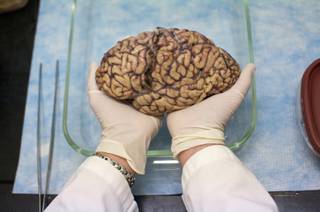
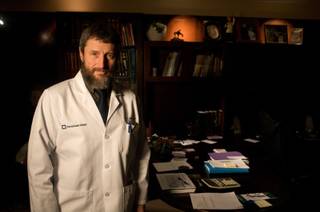
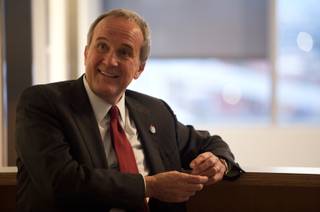


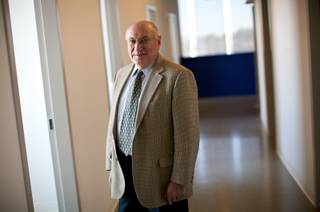

Join the Discussion:
Check this out for a full explanation of our conversion to the LiveFyre commenting system and instructions on how to sign up for an account.
Full comments policy